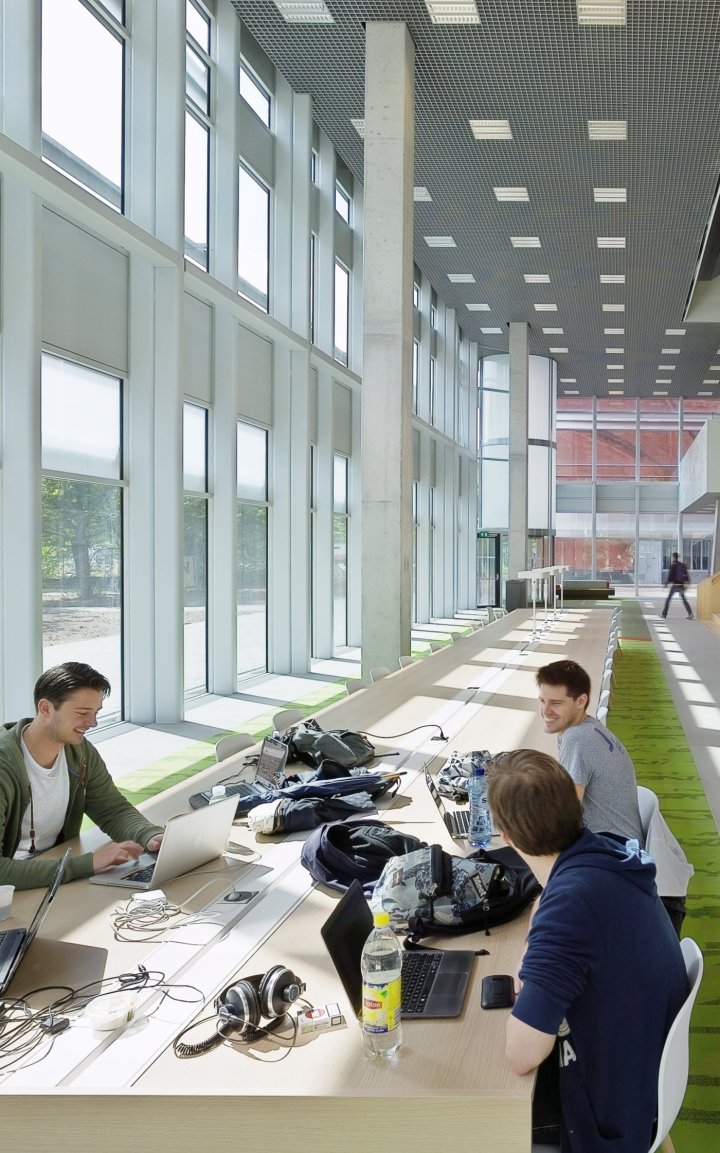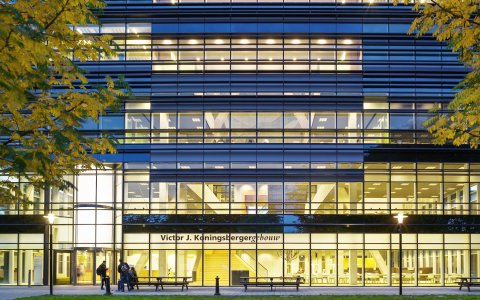Koningsberger Building, Utrecht University
The Victor J. Koningsberger building by EHA is a centre for education of the faculties of Geosciences, Science and Medicine at Utrecht University, located in the northwestern section of the Uithof campus. It is part of an education cluster designed to increase the university’s appeal to students, teaching staff and researchers by offering them an inspiring, comfortable and well-equipped place to study, work and interact.
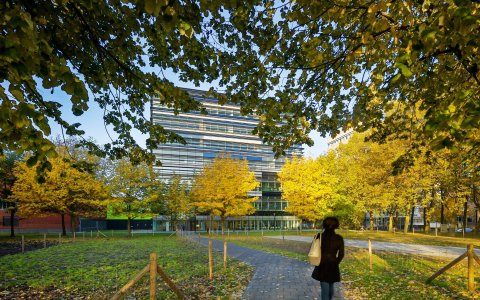
Project details
Name Koningsberger Building
Client Utrecht University
Location Utrecht Science Park
Status Completed late 2015
Awards & Nominations Winner Iconic Awards 2016 | Honourable Mention Architizer A+ Awards 2016
Architect Ector Hoogstad Architecten
Building services engineering Valstar Simonis
Contractor Zublin
Engineering consultant Pieters Bouwtechniek
Photography Petra Appelhof
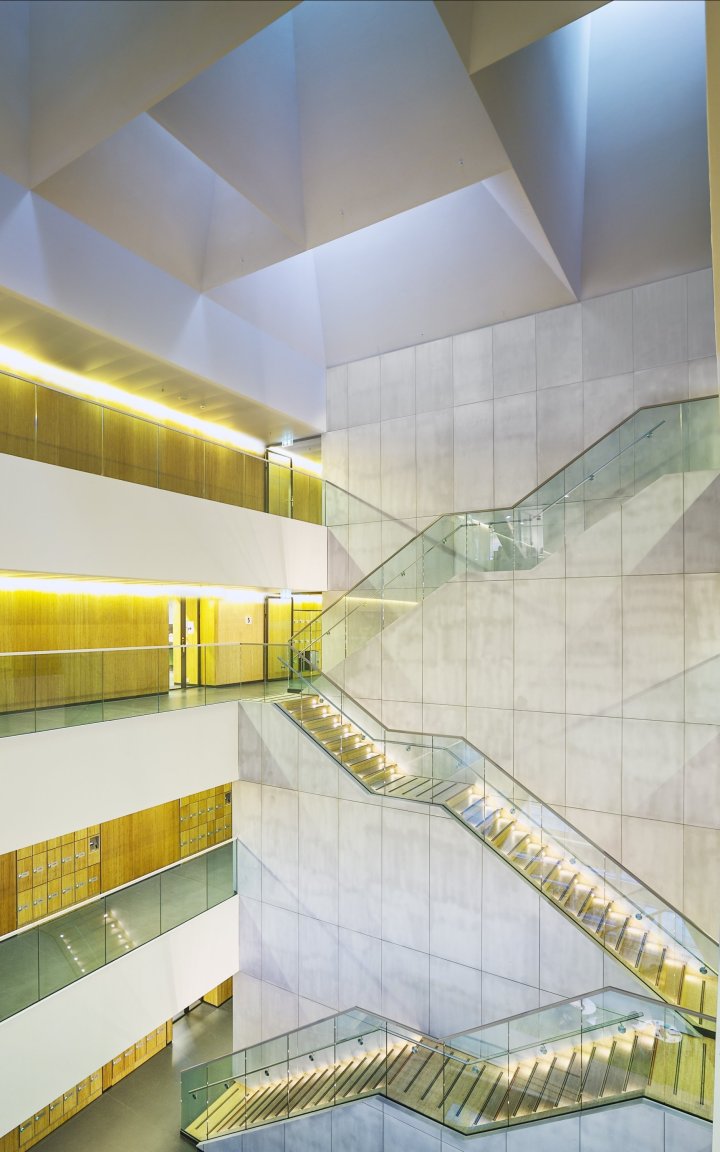
Integrated education cluster
The new building along with the Minnaert building by Neutelings Riedijk Architects and the Buys Ballot building constitutes an integrated education cluster. The aim was to create a sustainable building that provides new facilities to supplement those of the inward-looking Minnaert building and offers splendid views of the beautiful green surroundings.
The main themes of the design are natural light, openness and transparency. This is best reflected in the vast and spectacular atrium, which boasts a majestic staircase that appears to cascade from the top of the building to the bottom. Other defining features here are the massive 35 by 25 metre stability cross of cast-in-place concrete and an impressive skylight that diffuses light into every corner of the building.
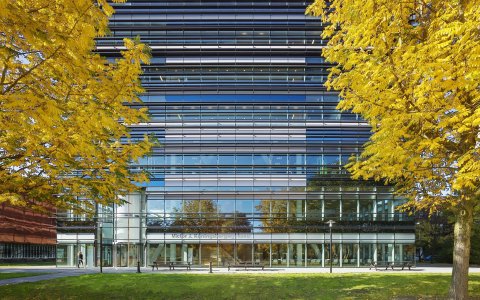
Introducing the loop
Multiple entrances, lecture theatres, reading rooms and catering facilities are located on the lower floors. A so-called “loop” on the first floor (recognisable from outside the building by its bright green facades) links the three buildings together, letting users move freely from one to the other without having to go outside. It also provides access to the cluster from the large bicycle parking facility on the ground floor.
Laboratories and other rooms for practical work are located on the upper floors, all of which lend themselves to easy reconfiguration thanks to the smart integration of structural elements and building services. The floors, for instance, which measure just 35 cm in thickness, house concrete core heating and cooling, piping (for air, gas, plumbing and sanitation, etc.), power cables and acoustic facilities in an innovative and synergistic arrangement. As a result, the upper floors can be used for a wide range of research activities and provide lots of opportunities for cross-fertilisation between academic disciplines.
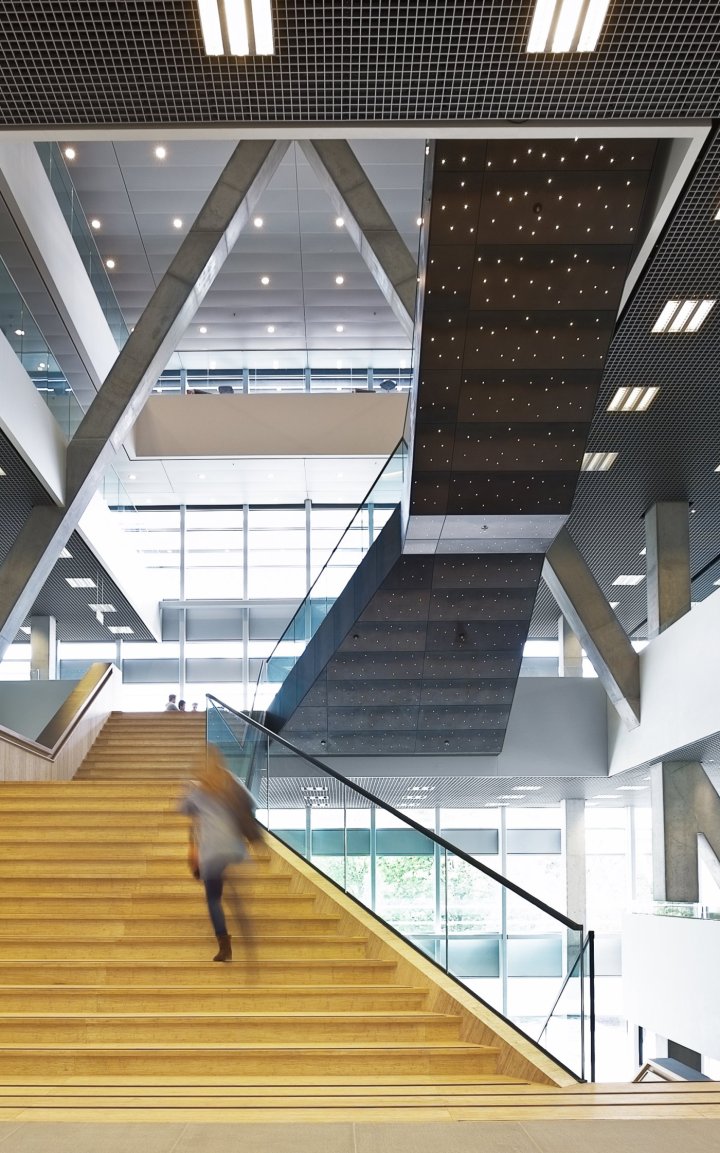
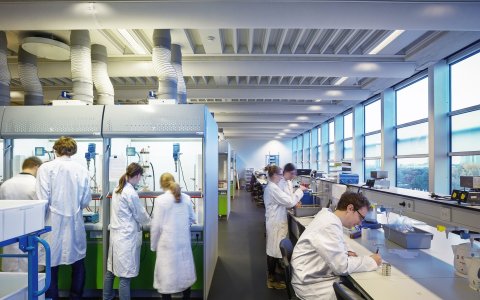
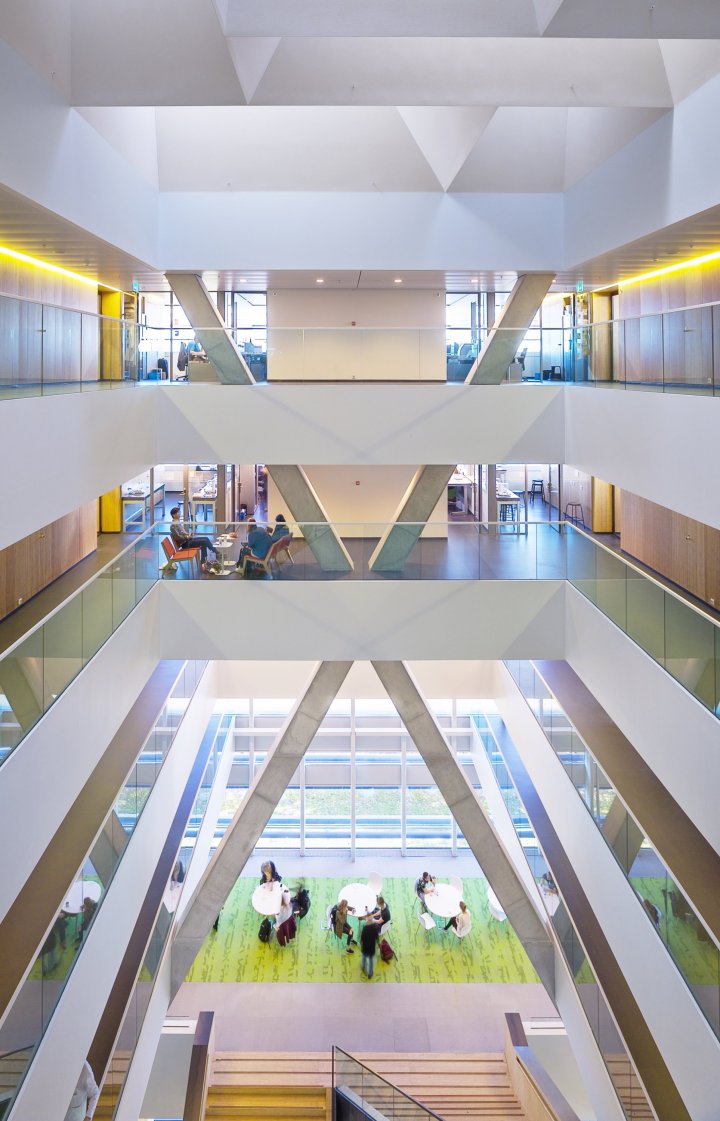
A play of blinds
The building’s façades have been made as transparent as possible or desired. At the same time, however, a great deal of thought was given to finding the right balance between the views offered by the building, the ingress of light, the orientation of the building and energy management, efforts aimed at meeting the high standards of sustainability that define all our projects. The horizontal blinds mounted on the façade play a key role in this regard, with variations in slat width, spacing and number depending on the orientationof the façade. The outcome is a highly energy-efficient building with an abundance of natural light and splendid panoramic views over the leafy historic surroundings of the Uithof.
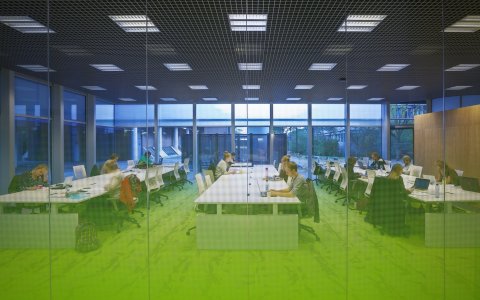
Green as signature color
EHA also designed the building’s interior, in consultation with the university and its intended users, naturally. The approach here was defined by our decision to use natural materials such as bamboo and stone, in combination with a fresh green colour for upholstery and complementary colour accents elsewhere. Other highlights are the large glass interior walls adorned with green silkscreen prints characterised by a gradual variation in intensity, the media walls in the “loop”, and the cosy six-person booths for group work dotted about the vast reading room.
The design and execution earned us the 2016 Iconic Award, the German Design Council’s international award for holistic projects in the fields of architecture, interior architecture, product design and brand communication.
